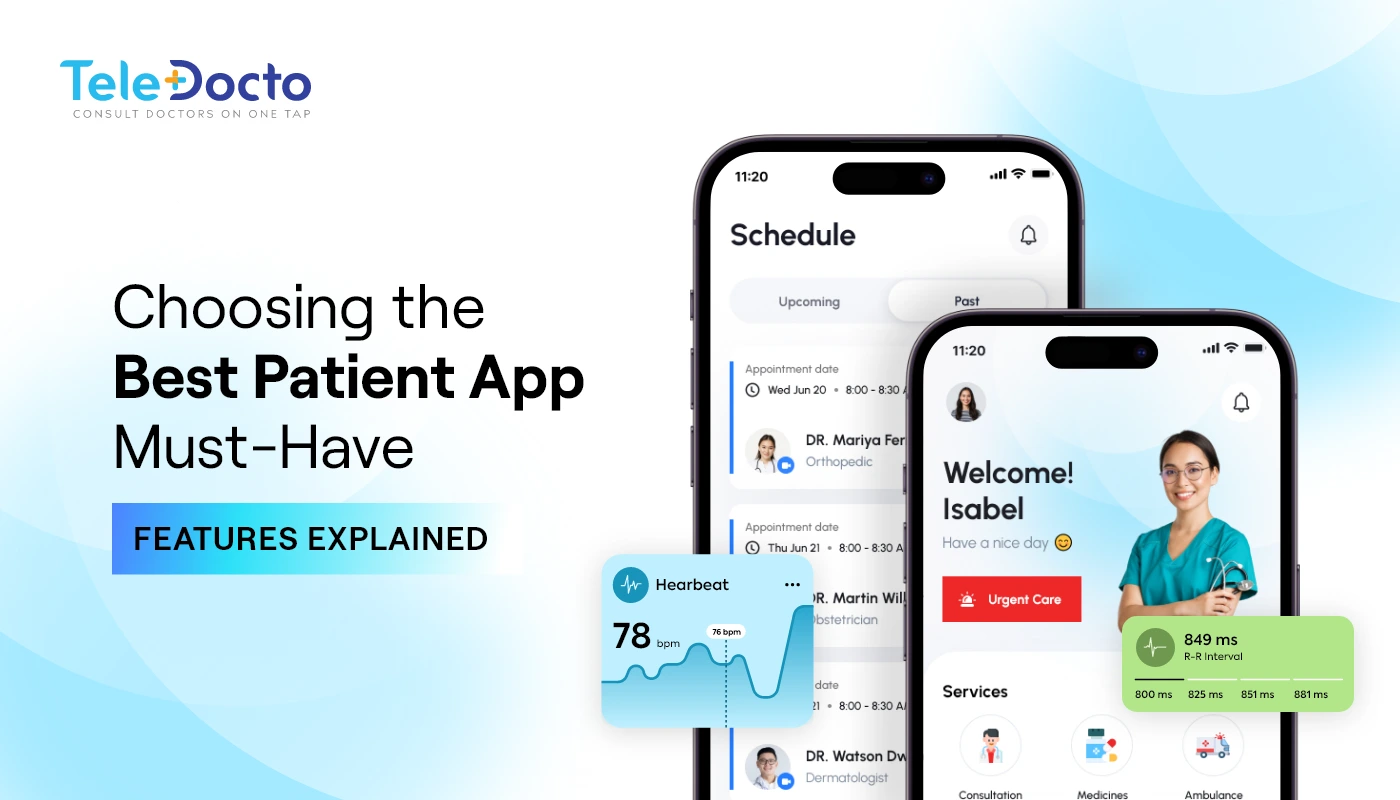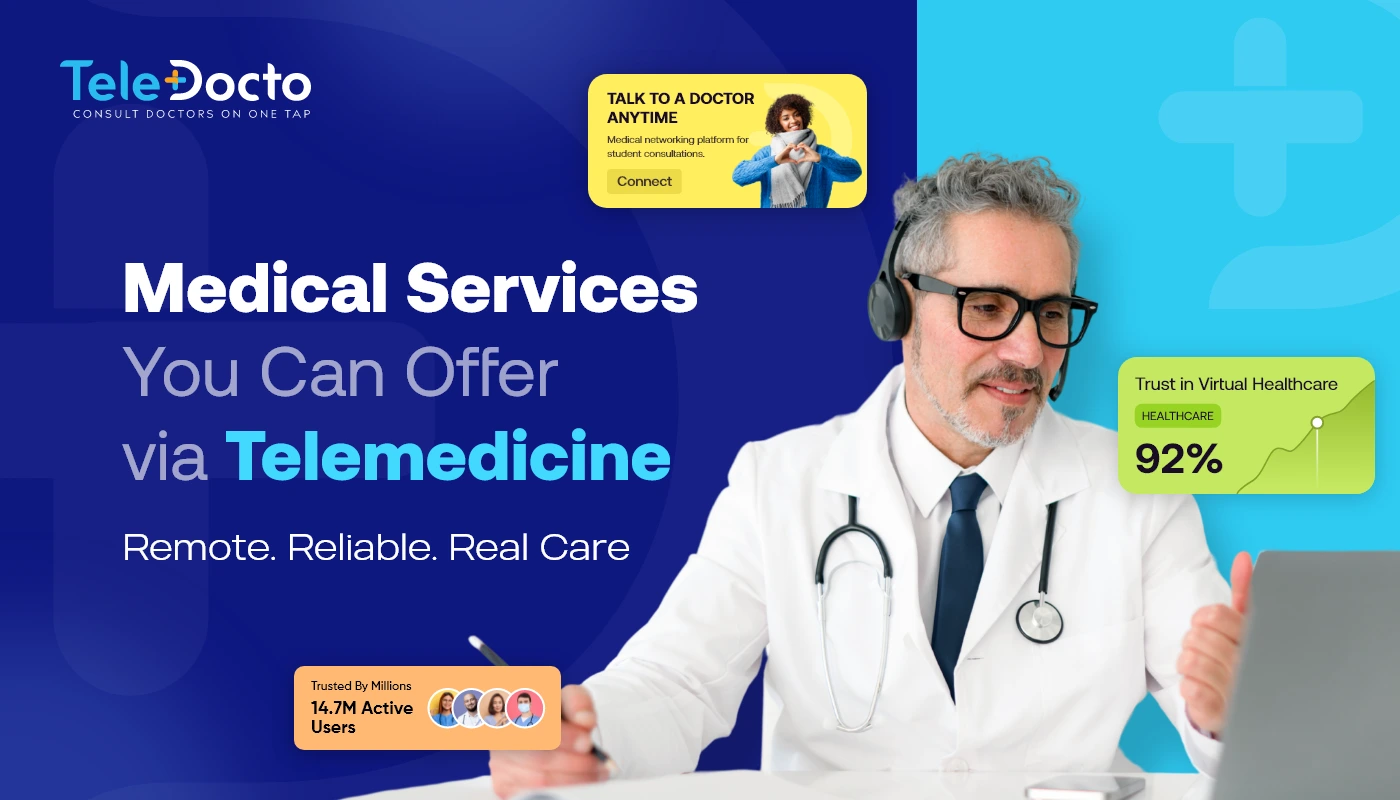
Unlock User Insights: 6 Steps to Master UX Research in Healthcare Apps
Great design begins with understanding and research. Addressing user needs is crucial in starting a new project or revamping an existing one! Skipping user experience (UX) research early on can lead to expensive mistakes down the road. In healthcare, this step becomes even more critical—it ensures your product is user-friendly and avoids frustrating UX issues.
Brief About UX Research
Oftentimes, User Experience (UX) Research is mistaken for user research, but they are not similar. User Research is about understanding users’ needs and motivations through feedback collection, typically as a part of UX research. While, UX Research in healthcare lay emphasis on systematically studying user needs, behaviors, and requirements to collect meaningful insights for creating design solutions.
Wondering about the value of UX research for healthcare apps? It helps healthcare businesses:
- Gather information about the people who will use the product.
- Study the market to see if there’s demand for the product.
- Confirm if business ideas are on the right track.
- Find and fix issues users face with the app.
- Collect feedback from users and address their needs.
- Create designs that are useful and easy to use.
- Improve overall user satisfaction.
Steps to Perform UX Research
Step 1 – Define Research Goals
Before starting any research, define your goals clearly. Whether improving app usability, enhancing patient engagement, or identifying healthcare provider pain points, clear objectives help focus and guide your research. This targeted approach not only ensures you can measure success but also helps prioritize key areas for improvement, ultimately leading to actionable insights and more effective solutions.
Top Things to Consider:
- Identify the primary user groups, such as patients, doctors, or administrators.
- Define clear metrics, like reducing onboarding time or boosting daily active users.
- Align research objectives with the app’s core mission, focusing on areas like improving medication adherence or telehealth consultations.
Step 2 – Interview Main Stakeholders
There are numerous stakeholders in healthcare apps such as patients, doctors, administrators, and IT experts. Connecting with these groups early in the research process helps collect meaningful insights for seamless app development process. For example, clinicians may rank quicker access to patient records for suitable decision-making, while patients might focus on a simple medication reminder interface. Understanding the needs of each group can create a user-centric app development solution customized to match individual’s needs.
Ways to Approach Stakeholders:
- Schedule one-to-one meetings to understand stakeholders’ expectations.
- Use open-ended questions to explore their experiences with existing healthcare systems.
- Document recurring themes and prioritize them according to impact and feasibility.
STEP 3- Use User Surveys and Polls
Surveys and polls are vital tools that help in understanding user preferences and addressing major concerns. They offer meaningful insights into user experiences and opportunities, particularly for collecting quantitative data like satisfaction levels or feature appeals. For example, asking “How easy was it to navigate the app?” or “What features help you manage your health?” helps identify improvement areas, customize offerings to user requirements, and improve overall user engagement.
Best Practices for Effective Surveys:
- Keep surveys short in summarized form and targeted to sustain user engagement.
- Include different question types, such as Likert scale, multiple-choice, and open-ended formats.
- Ask relevant questions, specifically personalized to the healthcare context.
STEP 4- Observe Users in Context
Contextual inquiry involves watching users interact with your app in real-life situations to understand their behavior and identify issues. This helps find usability problems that might not show up in controlled testing, offering chances for improvement. In healthcare apps, this is especially important since the user’s environment can affect their experience. For example, a senior patient using a telemedicine app at home might struggle with small text, complicated navigation, or confusing instructions.
Steps to Implement:
- Observe users while they perform tasks like booking appointments or logging symptoms.
- Note any frustrations, hesitations, or workarounds they use.
- Capture insights through audio, video, or detailed notes for later review.
STEP 5- Prototype and Test Early
Once you’ve gathered user insights, create prototypes to test assumptions and design ideas before full-scale development. Early testing can easily detect potential issues and decrease the chances of launching features that don’t match user needs. Figma, Adobe XD, and InVision are robust designing tools that enable seamless creation and sharing of prototypes, simplifying real-time feedback. This process saves time, reduces costly changes, and ensures a more efficacious final product.
Tips for Prototyping:
- Begin with simple wireframes to test basic functionality.
- Run usability tests where users perform tasks like scheduling appointments.
- Make quick improvements according to the feedback given by users.
STEP 6- Combine Accessibility and Empathy
Healthcare apps must focus on accessibility and inclusivity to assist a wide range of user groups. Empathy-driven research ensures that the app is good enough to cater to individuals needs with diverse digital literacy, disabilities, or health conditions. This approach guides the development of features like easy-to-read interfaces, voice navigation for visual impairments, and multilingual support. These design elements improve usability and enhance user satisfaction, ensuring everyone can access and benefit from the app’s services.
Key Areas to Focus:
- Test the application with screen readers and modern technologies.
- Follow accessibility standards including Web Content Accessibility Guidelines (WCAG).
- Add various user personas in research, like caregivers, elderly patients, people with chronic illnesses.
Final Thoughts
Mastering UX research for healthcare apps is an iterative process that blends empathy, technology, and user-centric design. By following these six steps, you can unlock actionable user insights and create apps that address real-world healthcare challenges.
Frequently Asked Question
User research helps designers understand what users need, how they behave, and what problems they face. It guides decisions on how to design the interface, making sure the product is easy to use, accessible, and meets user expectations. This results in better usability and higher user satisfaction.
Common UX research methods include surveys, interviews, usability tests, focus groups, and observations. These methods gather both qualitative and quantitative data to understand user needs and assess design effectiveness. They offer insights that help shape the design process and ensure the product meets user expectations.
Asking the right questions in UX research involves focusing on the user’s experience, behaviors, and goals. It is important to avoid leading or biased questions, frame them clearly, and keep them open-ended to encourage detailed responses. The goal is to prioritize questions that explore challenges, pain points, and user expectations to gather meaningful insights.
Engaging with real users early helps designers spot usability issues and pain points before development goes too far. It lets designers validate ideas, improve design concepts, and make necessary changes. Early feedback ensures the final product meets user needs, making it easier to use and more satisfying.
Conducting user experience research with user groups involves defining clear research objectives, selecting representative user groups, and recruiting participants. Appropriate research methods, such as surveys and interviews, are then chosen. After conducting the research, findings are analyzed, insights are presented, and the insights are applied to improve the design.
Recent Blogs

Telemedicine has changed the way how patients connect with doctors. From routine check-ups to specialist consultations, more people now expect healthcare to be just a click away. But for hospitals, clinics & startups running a telemedicine platform, the real challenge isn’t just about having the technology. It’s about having enough qualified, licensed providers to meet […] Read more

Patients are no longer willing to stand in long queues or make endless calls just to schedule an appointment or check test results. A patient portal app changes this dynamic, putting essential healthcare services right into patients’ hands and making communication and care management seamless. It gives patients the same level of simplicity and ease […] Read more

Going to the doctor’s clinic is often challenging due to long travel distances, waiting times, and crowds there! It clears that the way traditional healthcare delivery was managed, has certain limitations. Enter telemedicine; not as a replacement, but as a modern upgrade to the healthcare department. From a general consult to specialist care, telemedicine has redefined […] Read more